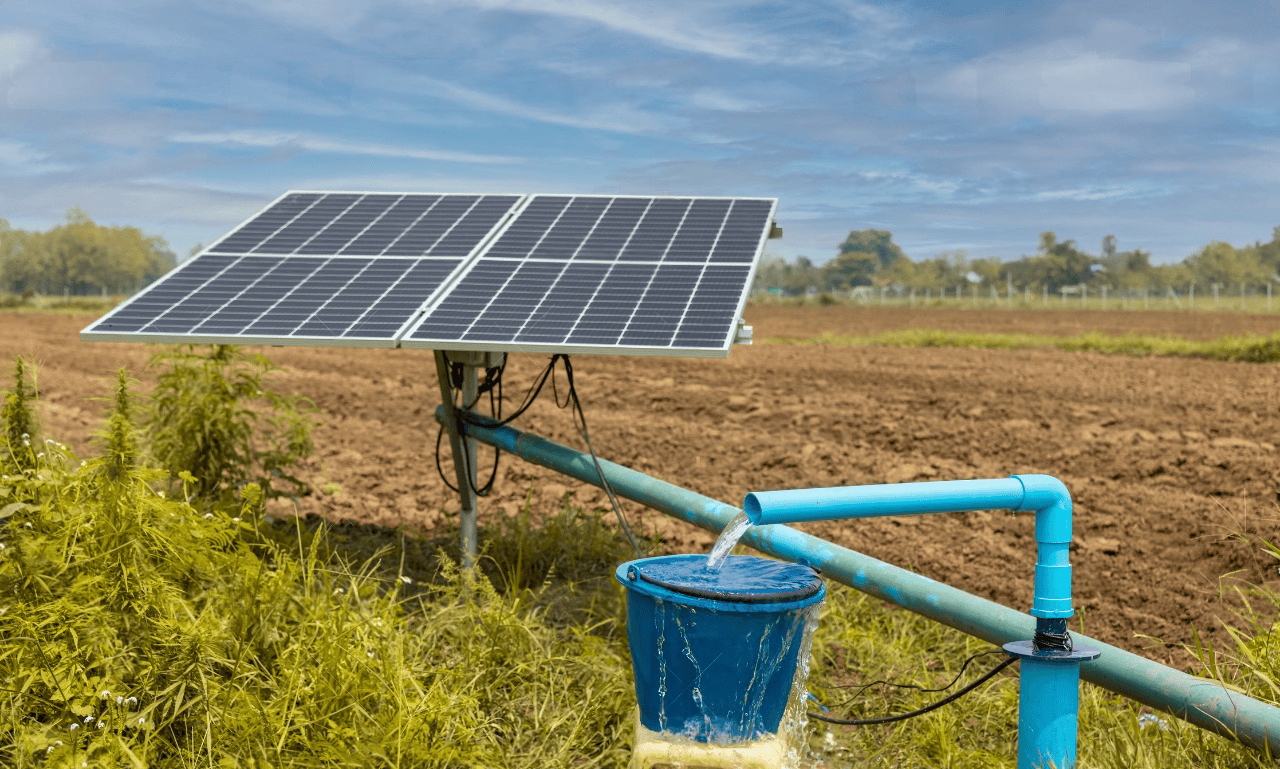Solar Power Plant for Agriculture (Solar Pump)

In recent years our R&D team in Tamil Nadu has been pioneering higher-efficiency solar pumping systems specifically tuned for the region’s agricultural needs. Working closely with TNAU’s Agricultural Engineering College, our engineers have implemented variable-frequency drive (VFD) controls on DC solar pumps and field-tested them throughout the Cumbum and Bhavani irrigation zones. These trials demonstrated up to a 12 percent increase in head-pressure performance during monsoon-season cloud cover, while built-in IoT telemetry (developed in collaboration with Chennai-based startups) streams real-time flow and energy-yield data to farmers’ smartphones. Concurrently, we’re evaluating bifacial and half-cut silicon modules on raised agrivoltaic racks in Coimbatore, where reflective soils help boost combined energy output by nearly 18 percent compared to standard panels.
Beyond hardware, our research division at IIT Madras and Anna University is examining low-cost perovskite-silicon tandem cells under Tamil Nadu’s high-UV conditions; early accelerated-aging tests in Madurai’s solar laboratory show these tandem cells can retain over 90 percent of their peak efficiency after 1,000 hours of UV exposure. We’re also piloting vanadium redox flow battery units at one of our farms in Tirunelveli to provide overnight pumping capability—local crop-water mapping by drone thermal surveys has allowed us to right-size storage capacity so that farmers incur no energy waste while guaranteeing 24-hour irrigation during dry spells.
On the residential rooftop front, our Chennai smart-city pilot has integrated next-gen heterojunction (HJT) modules from a Coimbatore manufacturer, achieving module efficiencies above 22 percent in real-world rooftop tests. These systems are paired with dynamic-reactive-power inverters that not only optimize self-consumption under Tamil Nadu’s midday peaks but also provide volt-VAR support back to the local DISCOM, helping stabilize neighborhood grids. In parallel, our partnership with a Tamil Nadu EV OEM is exploring Vehicle-to-Home (V2H) scenarios: parked electric three-wheelers and passenger vehicles act as bidirectional batteries, bumping residential self-sufficiency rates from an average of 45 percent up toward 75 percent under summer loading.
Finally, we’re trialing façade-mounted BIPV modules and clay-tile–style rooftop tiles in heritage zones around Pondicherry and Madurai, working with local heritage authorities to maintain architectural aesthetics while meeting modern performance standards. Our coatings lab in Tiruchirappalli has formulated a UV-resistant, anti-soiling surface treatment that, when applied to modules, cuts daily cleaning requirements by half and sustains output gains of 3–5 percent even through roadside dust storms. All of these initiatives are supported by grants from MNRE and the Tamil Nadu Energy Development Agency, ensuring that our innovations are both cutting-edge and accessible to local communities.
